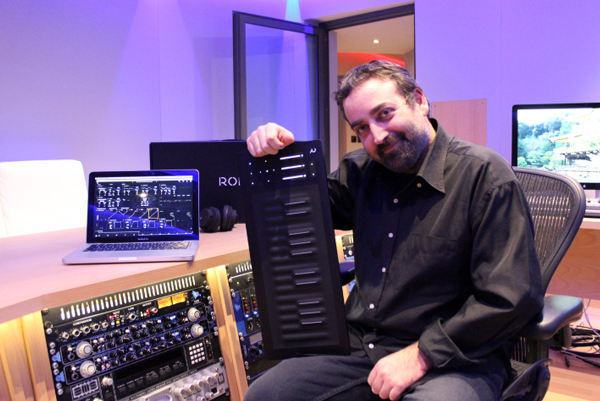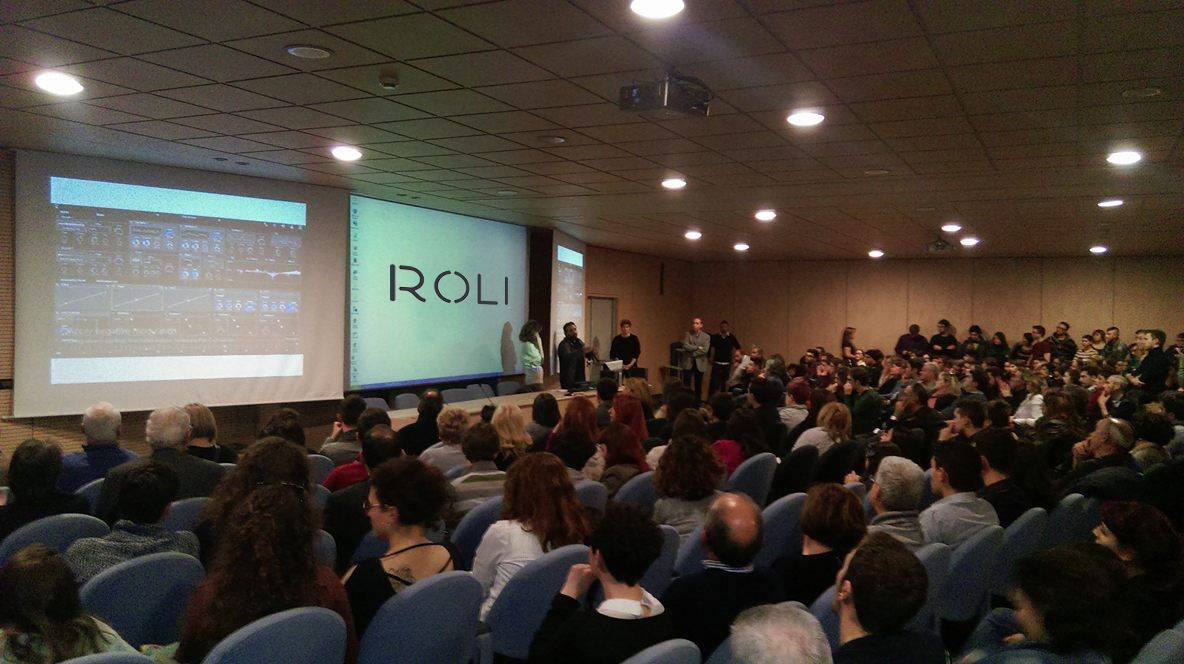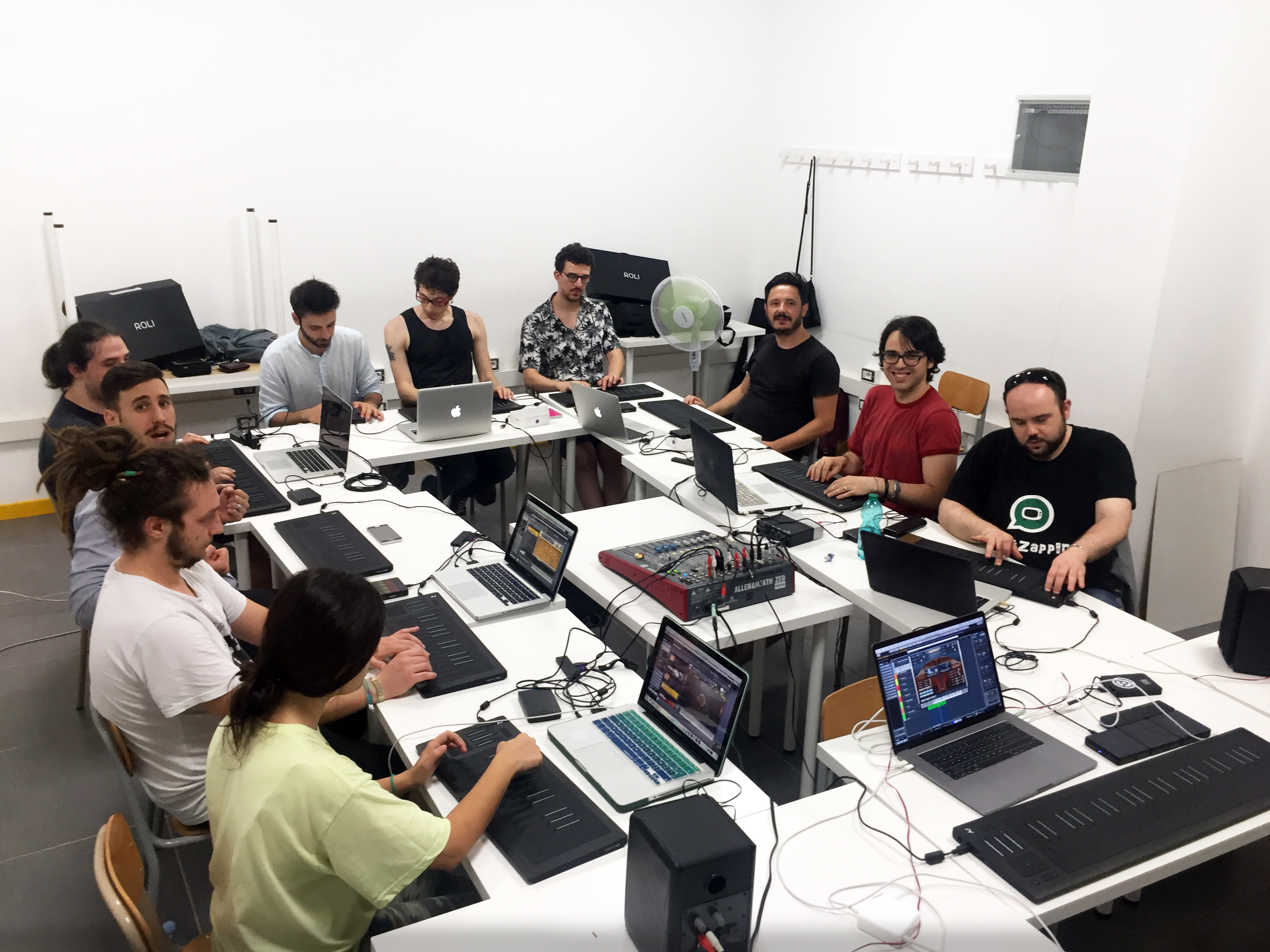Luigi Sansò and the Seaboards of Rome
Teaching sound design with the Seaboard RISE and BLOCKS at the University of Rome Tor Vergata
Luigi Sansò's students learn sound design skills and techniques with the Seaboard RISE.

Italian sound designer and composer Luigi Sansò is Coordinator of the Master in Sonic Arts and Head of New Music Technologies and Research Department of LARS (Laboratorio Ricerca sul Suono) at the University of Rome Tor Vergata, and Head of the Sound and Music Department at the International School of Comics. He teaches Sound Design and Music Composition for Film and Videogames, Advanced Audio Editing and Advanced MIDI Editing. We spoke with Luigi to learn more about how he has been approaching ROLI instruments as a tool in his sound design courses since early 2016.
What inspires you about being a music educator?
I live for music! It has always been a part of my life. Through education I can guide young musicians discovering art and technology and help some go on to be professionals. In my role at the university I communicate with so many young sound designers, and what they achieve every day motivates me more and more.
You teach sound design for TV, film, and video games. How do you present each of those fields differently?
In cinema and TV everything is linear and based on a timeline: the creation of content stops when the sound is finalized. The main difference in the video game world is the non-linearity. Sounds can loop or change depending upon how a player is interacting with a game environment. So composing for video games requires the use of a DAW and software such as WWISE or ELIAS, programs that provide integrated solutions for video game audio. It’s helpful for my students to understand linear and non-linear workflows. Music technology is at the core of both of them.
You teach a class on the Seaboard RISE. What do you cover?
The Seaboard RISE offers expressive capabilities at the highest level and requires an emotional feeling from the musician. I try to help students reach those feelings — it’s indispensable for transforming thoughts into music! We also analyze the expressive features of the acoustic instruments that we will simulate on the Seaboard, and combine that with exploration of advanced MIDI programming.
What playing techniques or exercises do you teach?
Learning an instrument with new expressive capabilities requires some technical and mental adaptation. I’ve noticed that some musicians playing the Seaboard for the first time can feel challenged. Without experience of acoustic instruments they have never had to play in tune before. But guiding them can improve their confidence and allow their personalities to shine through in their music.
I get people started with the Seaboard RISE through a series of exercises to improve tuning. I start with sensitivity on the RISE set to the lowest setting, so it’s more like a traditional piano. Then I increase the sensitivity after every series of exercises. The exercises begin on a single note at first and then become more polyphonic. Learning to play vibrato requires special attention: special exercises are needed to train students’ hands to use parts of their fingers that they have never used before.
“The Seaboard RISE is indispensable for transforming thoughts into music! It can really allow a musician's personality to shine through.“

You’ve also started to incorporate BLOCKS into your lessons too.
Yes, the BLOCKS universe is amazing because of its modularity and variety of surfaces. Lightpad Blocks can either be played as an instrument, or they can control a DAW during the same song or project — all with MIDI programming. And now with the Seaboard Block we have a surface with the same expressive capabilities as the Seaboard RISE at a much lower cost. Of course these new surfaces will require some new teaching exercises!
What educational initiatives are coming next for you?
We’re expanding the activities related to video-game sound design and adaptive music, and we’re increasing our focus on multi-expressive instruments. We plan to launch educational initiatives for audio plugin development, and we’re also hoping to create an internationally recognized certification for music technology.

Teaching Tips
It is important that students learn to master three key skills when learning to use the Seaboard:
1) Tuning: Begin by teaching students how to play a Seaboard in tune. Adaptation will be necessary for most musicians. Remember to remind students that their existing musical background will not be lost but rather improved with a few simple exercises!
2) Expressivity Control: Guide students so they have full control over each of the five dimensions of touch, so they can put their own emotional feeling into their music.
3) Integration with your setup: Students can save a lot of time by learning to manage MIDI at a high level. In the past we were used to recording music, and then spending hours editing the expressivity within our favorite libraries. But now with a Seaboard or BLOCKS you only have to tweak details in your DAW, since you can now control most of the final outcome with your controller — which saves plenty of time!
Join the ROLI community